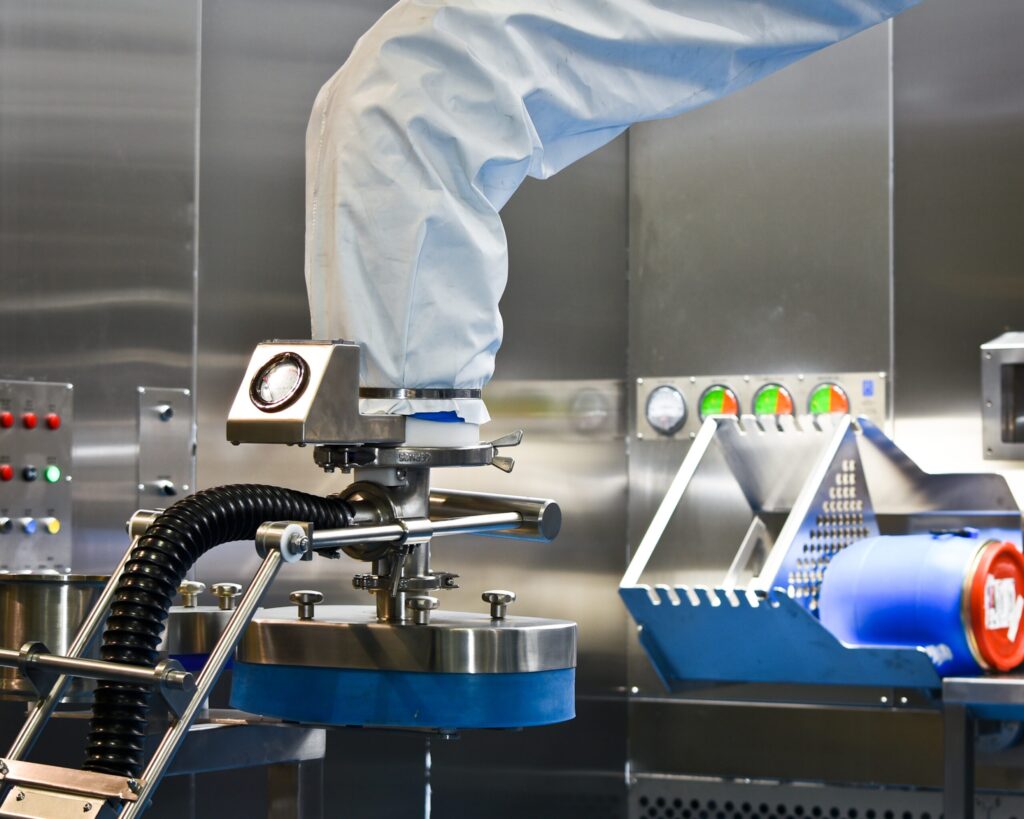Vacuum Tube Lifters: Understanding the Difference Between Porous and Non-Porous Materials
Vacuum tube lifters are essential tools in various industries for lifting and transporting materials. However, their effectiveness can vary significantly depending on the type of material being handled. The key difference lies in whether the material is porous or non-porous.

Lifting Non-Porous Materials
Non-porous materials, such as glass, metal sheets, plastics, and sealed boxes, are easy to lift with vacuum tube lifters. When the vacuum is applied to these materials, it creates a tight seal, preventing air from escaping. This results in a strong and consistent lift, allowing for precise and controlled movement of the load.
The vacuum pump creates suction inside the inner tube. Since air cannot pass through non-porous materials, the vacuum generates a strong and stable lift. The system securely holds the load, allowing for precise and controlled lifting and movement.
Non-porous materials are ideal for vacuum tube lifters because they provide a consistent and reliable lifting surface. Examples of applications include lifting glass panels in a production line, handling solid metal or plastic sheets, and moving sealed containers or non-perforated boxes.
Lifting Porous Materials
Porous materials, such as cardboard boxes, paper sacks, textiles, foam, and certain wood products, present a more challenging scenario for vacuum tube lifters. Due to their porous nature, air can leak through the material, reducing the effectiveness of the vacuum. This can make it difficult to achieve a strong grip and maintain control of the load.
To lift porous materials effectively, the vacuum system needs to compensate for air leakage by creating a stronger and more consistent suction. This may require a more powerful pump or a larger surface area on the inner tube. Additionally, specialised suction pads or accessories may be used to optimise grip on porous surfaces.
Examples of applications involving porous materials include lifting and stacking cardboard boxes in logistics, handling bags of flour, sand, or other granular materials, and moving materials like textiles, where air can flow through the fabric.
Key Differences
Non-porous materials create a perfect seal, making lifting easier. Porous materials require enhanced vacuum control to account for air leakage. This means that the vacuum system needs to be more powerful or have additional features to compensate for the air that escapes through the porous material.
Lifting porous materials often needs stronger or more adaptable vacuum systems to maintain hold. This is because the vacuum system must work harder to overcome the air leakage and create a strong enough grip on the material.
Handling porous surfaces may require tailored suction cups or larger lifting surfaces to maintain contact. This is because the suction cups need to be designed to grip the porous material effectively and prevent air leakage. Additionally, larger lifting surfaces can help to distribute the vacuum force more evenly and improve grip.
Understanding the difference between lifting porous and non-porous materials is crucial when selecting and using vacuum tube lifters. By choosing the right equipment and techniques, you can ensure safe and efficient handling of various materials.

Palamatic; Your Partner for Industrial Vacuum Lifting Solutions
At Palamatic, we specialise in providing innovative and reliable industrial vacuum lifting equipment, including vacuum tube lifters.
Our solutions are designed to meet the specific needs of various industries, from manufacturing and logistics to construction and recycling. Whether you’re handling non-porous materials or porous materials, our experts can help you select the ideal vacuum tube lifter to optimise your operations.
We offer a wide range of products and customisation options to ensure optimal performance and safety. Contact us today to learn more about how Palamatic can help you streamline your lifting processes and improve efficiency.

